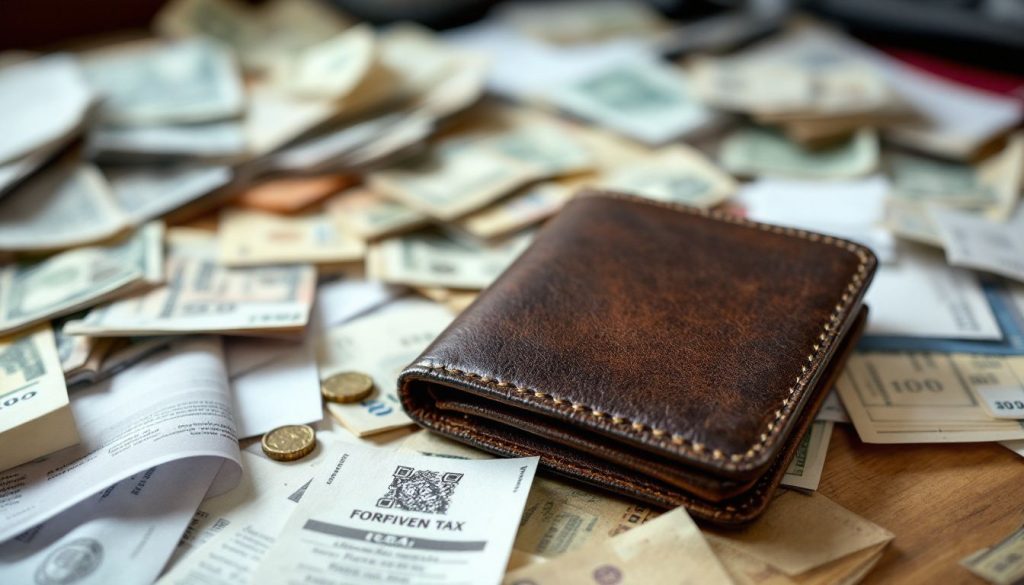Introduction To Bankruptcy
Bankruptcy is a legal process that can provide relief from overwhelming debt. It is a way for individuals and businesses to get a fresh start and become financially stable. In Canada, bankruptcy is regulated by the Bankruptcy and Insolvency Act (BIA). This act outlines the rights and responsibilities of debtors and creditors, and provides protection for debtors from creditors. Bankruptcy can be a difficult process, but it can also provide a way out of debt and a fresh start. This article will discuss how bankruptcy can protect you in Canada.
How Bankruptcy Can Help You Rebuild Your Credit in Canada
Bankruptcy is a legal process that can help individuals and businesses in Canada to manage their debt and rebuild their credit. It is a serious decision that should not be taken lightly, as it can have a long-term impact on your credit score and financial future. However, if you are struggling with unmanageable debt, bankruptcy can provide a fresh start and help you to rebuild your credit.
When you file for bankruptcy, your credit score will be affected. Your credit report will show that you have filed for bankruptcy, and this will remain on your report for up to seven years. During this time, it will be difficult to obtain new credit, as lenders will view you as a high-risk borrower.
However, bankruptcy does not mean that you will never be able to rebuild your credit. In fact, it can be an opportunity to start fresh and begin rebuilding your credit. Here are some tips to help you rebuild your credit after bankruptcy:
1. Obtain a secured credit card. A secured credit card is a type of credit card that is backed by a deposit. This deposit acts as collateral and reduces the risk for the lender. Secured credit cards can help you to rebuild your credit, as they report to the credit bureaus and can help to improve your credit score over time.
2. Make all payments on time. Making all payments on time is one of the most important steps to rebuilding your credit. Late payments can have a negative impact on your credit score, so it is important to make sure that all payments are made on time.
3. Monitor your credit report. It is important to monitor your credit report regularly to ensure that all information is accurate and up-to-date. You can obtain a free copy of your credit report from the two major credit bureaus in Canada, Equifax and TransUnion.
By following these tips, you can begin to rebuild your credit after bankruptcy. It may take some time, but with patience and dedication, you can eventually restore your credit and achieve financial freedom.
What Are the Different Types of Bankruptcy in Canada?
Bankruptcy is a legal process that allows individuals and businesses to restructure their finances and obtain a fresh start. In Canada, there are two types of bankruptcy: consumer bankruptcy and business bankruptcy.
Consumer bankruptcy is available to individuals who are unable to pay their debts. This type of bankruptcy is designed to help individuals who are facing financial hardship and are unable to pay their debts. When an individual files for consumer bankruptcy, their assets are liquidated and the proceeds are used to pay off creditors. The individual is then discharged from their debts and is no longer responsible for paying them.
Business bankruptcy is available to businesses that are unable to pay their debts. This type of bankruptcy is designed to help businesses restructure their finances and obtain a fresh start. When a business files for bankruptcy, their assets are liquidated and the proceeds are used to pay off creditors. The business is then discharged from their debts and is no longer responsible for paying them.
In addition to consumer and business bankruptcy, there are also two other types of bankruptcy available in Canada: Division I and Division II bankruptcies. Division I bankruptcies are available to individuals who have a high level of debt and are unable to pay it off. Division II bankruptcies are available to individuals who have a lower level of debt and are able to pay it off over a period of time.
No matter which type of bankruptcy an individual or business chooses, it is important to understand the process and the implications of filing for bankruptcy. It is also important to seek professional advice from a qualified bankruptcy trustee to ensure that the process is handled properly.
How to Determine if Bankruptcy is the Right Option for You in Canada
If you are struggling with debt in Canada, you may be considering filing for bankruptcy. Bankruptcy is a legal process that can help you get out of debt and start fresh. However, it is important to understand that bankruptcy is a serious decision and should not be taken lightly. Before making a decision, it is important to understand the implications of bankruptcy and determine if it is the right option for you.
First, it is important to understand the process of bankruptcy in Canada. Bankruptcy is a legal process that is administered by the Office of the Superintendent of Bankruptcy (OSB). When you file for bankruptcy, you must provide the OSB with a list of all of your assets and liabilities. The OSB will then review your financial situation and determine if you are eligible for bankruptcy. If you are eligible, the OSB will assign a Licensed Insolvency Trustee (LIT) to manage your bankruptcy. The LIT will help you complete the bankruptcy process and will be responsible for distributing your assets to your creditors.
Once you have filed for bankruptcy, you will be required to make certain payments to the LIT. These payments are known as “surplus income payments” and are based on your income and family size. You will also be required to attend two credit counselling sessions. These sessions will help you understand how to manage your finances and avoid getting into debt in the future.
It is important to understand that bankruptcy will have a significant impact on your credit score. Your credit score will drop significantly and it will take several years to rebuild your credit. Additionally, you may be required to surrender certain assets, such as your home or car, in order to pay off your creditors.
Finally, it is important to consider the cost of bankruptcy. The cost of filing for bankruptcy in Canada can range from $1,500 to $3,000. This cost includes the fees for the LIT and the credit counselling sessions.
In conclusion, bankruptcy is a serious decision and should not be taken lightly. Before making a decision, it is important to understand the implications of bankruptcy and determine if it is the right option for you. If you are considering filing for bankruptcy, it is important to speak with a Licensed Insolvency Trustee to discuss your options and determine if bankruptcy is the best solution for your financial situation.
How to Prepare for Bankruptcy in Canada
Preparing for bankruptcy in Canada can be a daunting process. However, with the right information and guidance, it can be a manageable process. Here are some tips to help you prepare for bankruptcy in Canada.
1. Gather Your Financial Documents: Before you can begin the bankruptcy process, you will need to gather all of your financial documents. This includes bank statements, credit card statements, loan documents, and any other documents related to your financial situation. Having these documents on hand will help you understand your financial situation and make the bankruptcy process easier.
2. Speak to a Licensed Insolvency Trustee: A Licensed Insolvency Trustee (LIT) is a professional who is licensed by the government to help people with their financial problems. They can provide advice and guidance on the bankruptcy process and help you understand your options. It is important to speak to an LIT before you make any decisions about bankruptcy.
3. Understand Your Rights and Responsibilities: It is important to understand your rights and responsibilities when filing for bankruptcy in Canada. This includes understanding the rules and regulations of bankruptcy, as well as your rights and obligations as a debtor.
4. Create a Budget: Creating a budget is an important step in preparing for bankruptcy. A budget will help you understand your financial situation and make sure you are able to make payments on time.
5. Make a List of Your Creditors: Before you file for bankruptcy, you should make a list of all of your creditors. This list should include the name of the creditor, the amount owed, and the contact information. This list will be used by the LIT to contact your creditors and inform them of your bankruptcy.
By following these tips, you can prepare for bankruptcy in Canada and make the process easier. It is important to remember that bankruptcy is a serious decision and should not be taken lightly. If you are considering bankruptcy, it is important to speak to a Licensed Insolvency Trustee to understand your options and make sure you are making the right decision.
What Are the Benefits of Bankruptcy Protection in Canada?
Bankruptcy protection in Canada is a legal process that provides individuals and businesses with a fresh start by eliminating or restructuring their debts. It is a powerful tool that can help individuals and businesses get back on their feet and move forward with their lives. Here are some of the benefits of bankruptcy protection in Canada:
1. Debt Relief: Bankruptcy protection in Canada can provide individuals and businesses with relief from overwhelming debt. It can help them eliminate or restructure their debts, allowing them to start fresh and move forward with their lives.
2. Protection from Creditors: Bankruptcy protection in Canada can provide individuals and businesses with protection from creditors. Once a bankruptcy is filed, creditors are legally prohibited from contacting the debtor or taking any action to collect the debt.
3. Rebuild Credit: Bankruptcy protection in Canada can help individuals and businesses rebuild their credit. After a bankruptcy is discharged, individuals and businesses can start rebuilding their credit by making timely payments on their debts and establishing a good payment history.
4. Fresh Start: Bankruptcy protection in Canada can provide individuals and businesses with a fresh start. It can help them eliminate their debts and start over with a clean slate.
Overall, bankruptcy protection in Canada can provide individuals and businesses with a powerful tool to help them get back on their feet and move forward with their lives. It can provide them with debt relief, protection from creditors, the ability to rebuild their credit, and a fresh start.
Conclusion
In conclusion, bankruptcy in Canada is a powerful tool that can help individuals and businesses get back on their feet financially. It provides a fresh start by eliminating most of your debts and allowing you to make a new financial plan. Bankruptcy also provides protection from creditors, allowing you to focus on rebuilding your financial future. While bankruptcy is not a decision to be taken lightly, it can be a valuable tool for those who are struggling with unmanageable debt.








